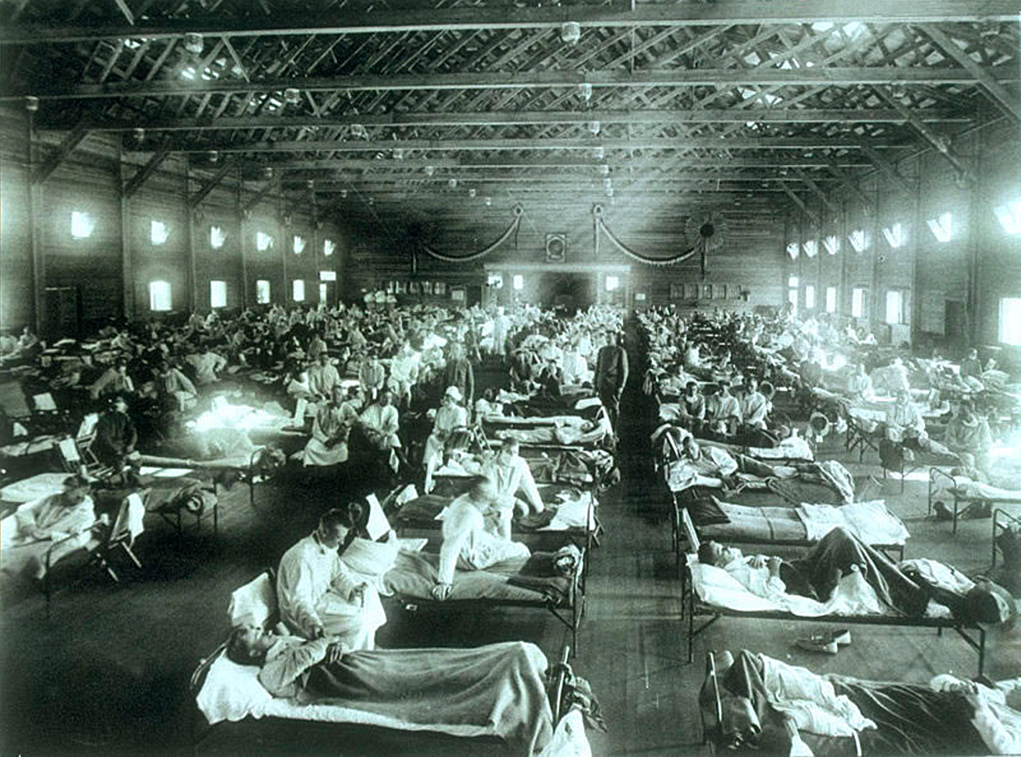ProMarket reviews the most recent and interesting academic papers on the ongoing pandemic: Sergio Correia, Stephan Luck, and Emil Verner studied how US cities and states reacted to the 1989-1919 influenza pandemic. They find that states with similar economies but different mortality rated diverged sharply for many years after the end of the crisis and cities enacting more severe social distancing do not experience worse economic outcomes.

Editor’s note: if you have a paper on Codiv-19 economics and you want to have it on ProMarket, please send it to ProMarket@ChicagoBooth.edu with a 500-1000 words article to present it to a general audience.
There is much uncertainty about the economic costs of various forms of non-pharmaceutical interventions, from social distancing to mandated state-wide quarantines, in order to limit the spread of COVID-19 in the US.
The 1918-1919 flu is the most recent instance of a global pandemic that is similar in scale and development to COVID-19, during which similar non-pharmaceutical interventions were put in place across the US.
For this reason, Sergio Correia, Stephan Luck, and Emil Verner of the Federal Reserve Board, the Federal Reserve Bank of New York, and the Massachusetts Institute of Technology, respectively, attempt to quantify the economic impacts of the 1918 episode to draw lessons for the present one.
More specifically, they leverage differences in exposure to the 1918 pandemic across states to get an idea of its short- to medium-term economic impact, as well as exploiting variation in the timing and severity of non-pharmaceutical interventions across US cities to gauge the possible benefits of intervening faster and more aggressively.
First, the authors collect city and state-level data between 1909 and 1923 on influenza mortality and measures economic activity including employment and output in manufacturing. To assess the 1918 pandemic’s impact on local economic activity at the state level, they rely on its somewhat arbitrary spread and control for time-varying regional factors that could have affected influenza mortality, such as the share of the population living in urban areas.
They find that states with similar growth in manufacturing activity diverged sharply between 1914 and 1919, with a one standard deviation increase in mortality (147.7 deaths per 100,000) leading to an 8% decline in manufacturing employment as well as a 6% fall in manufacturing output, which represents a significant depression of the supply side of the economy. Moreover, these effects persist until at least 1923.
On the demand side of the economy, consumer spending on durables, measured as the stock of registered motor vehicles, is shown to decline gradually in 1919 and 1920. This represents some evidence to suggest that the pandemic might have depressed local demand for durable products, such as cars.
Beyond establishing the substantial effects of the 1918 pandemic on the real economy, the authors also use data on the speed as well as severity of the non-pharmaceutical interventions response in each city to provide an estimate of the economic effects of interventions.
Note that while speed is straightforwardly defined as the number of days between the day a city’s death rate exceeded twice baseline influenza mortality rate in previous years and the first day city officials enforced a local non-pharmaceutical intervention, their measure of severity is simply the total number of days non-pharmaceutical interventions were in place during the fall of 1918, instead of accounting for the variation in exactly what kind of measures, scored on a scale of strictness, were adopted across these cities.
Moreover, it is possible that the policy response is a function of the quality of local institutions as well as local factors determining a city’s pandemic exposure.
The authors address these concerns somewhat by citing previous research finding that the 1918 pandemic’s spread was relatively arbitrary, sweeping gradually from east to west, with western cities adopting more stringent non-pharmaceutical interventions by learning from eastern states’ experiences. Thus, they argue, local institutions or other regional factors probably had little to do with policy choices in each city.
However, the authors do control for the importance of agriculture in each city’s state, because western states were more oriented towards agriculture than eastern states at that time. In the absence of controlling for this, one could worry that more agricultural states would implement more aggressive interventions in response to heavy swings in agricultural output during a pandemic.
The authors find that a one standard deviation increase in the speed of adoption of non-pharmaceutical interventions (8 days earlier) is associated with a 4% increase in manufacturing employment and a 5% increase in output after the pandemic had passed.
Furthermore, an increase of the duration of interventions by 46 days leads to a 6% higher level of employment and a manufacturing output increase of 7% after the pandemic. Both results suggest that cities enacting more severe social distancing do not experience worse economic outcomes, as measured in output and employment.
On the contrary, acting early and more aggressively helps soften the economic blow. Thus, while pandemics are shown to have economic costs that persist in the medium term, such costs can be partially mitigated through swifter and longer non-pharmaceutical interventions.

Lastly, it is important to keep in mind a number of caveats when interpreting the results from this paper in the context of the policy response to COVID-19.
First of all, the authors measure economic activity in the manufacturing sector, which after a quick search appears to account for about a third of total employment in 1920, according to a 1984 US Bureau of Labor Statistics study, with the other two sectors, agriculture and services, each accounting for another third of GDP.
This suggests that, while the authors capture the effect of the 1918 flu pandemic on a substantial part of the 1920s US economy, it is unclear whether the 1918 pandemic affected the remaining sectors differently, although one would suspect that agriculture would have been hit in a similar fashion due to its reliance on human labor supply.
Furthermore, the current US economy has a very different sectoral decomposition, with the service sector generating a large majority of GDP and manufacturing holding a share under 20%. As the service sector would likely take a smaller hit than manufacturing from policy responses during a pandemic, one should discount the size of the economic contractions due to the pandemic estimated in this paper.
However, the proportion of the economic costs that can be mitigated through aggressive non-pharmaceutical interventions is probably unaffected by changes in the economy’s sectoral decomposition over time, so that result could prove very informative for the current COVID-19 policy debate.
Furthermore, the 1918 flu pandemic was disproportionally fatal among prime working-age adults, which appears not to be the case for COVID-19. Thus, in interpreting especially the paper’s first part on the 1918 pandemic’s impact on the real economy this should be kept in mind.
Finally, there is too little historical data available about the 1918 episode to identify the exact mechanisms through which economic downturns can be mitigated using various policy instruments. For example, beyond establishing that non-pharmaceutical interventions reduce the downturn in manufacturing output, the authors do not have data on firms available, which could allow one to see what types of manufacturing activity responded well to early interventions.
Therefore, the above estimates can provide a sense of the effects’ magnitude rather than their various sources.
David Lever is a research professional at the Stigler Center, at the University of Chicago – Booth School of Business.
ProMarket is dedicated to discussing how competition tends to be subverted by special interests. The posts represent the opinions of their writers, not necessarily those of the University of Chicago, the Booth School of Business, or its faculty. For more information, please visit ProMarket Blog Policy.






